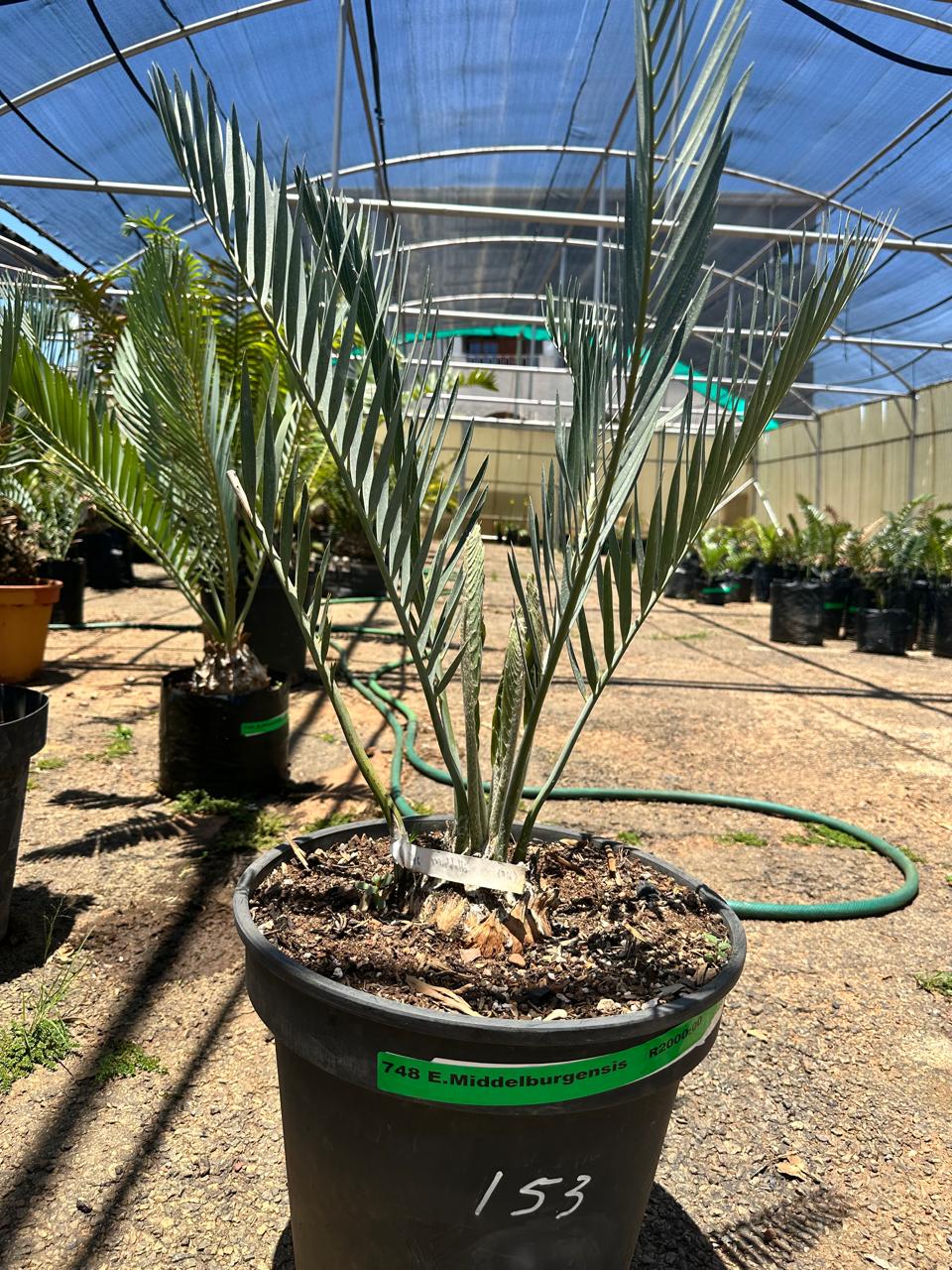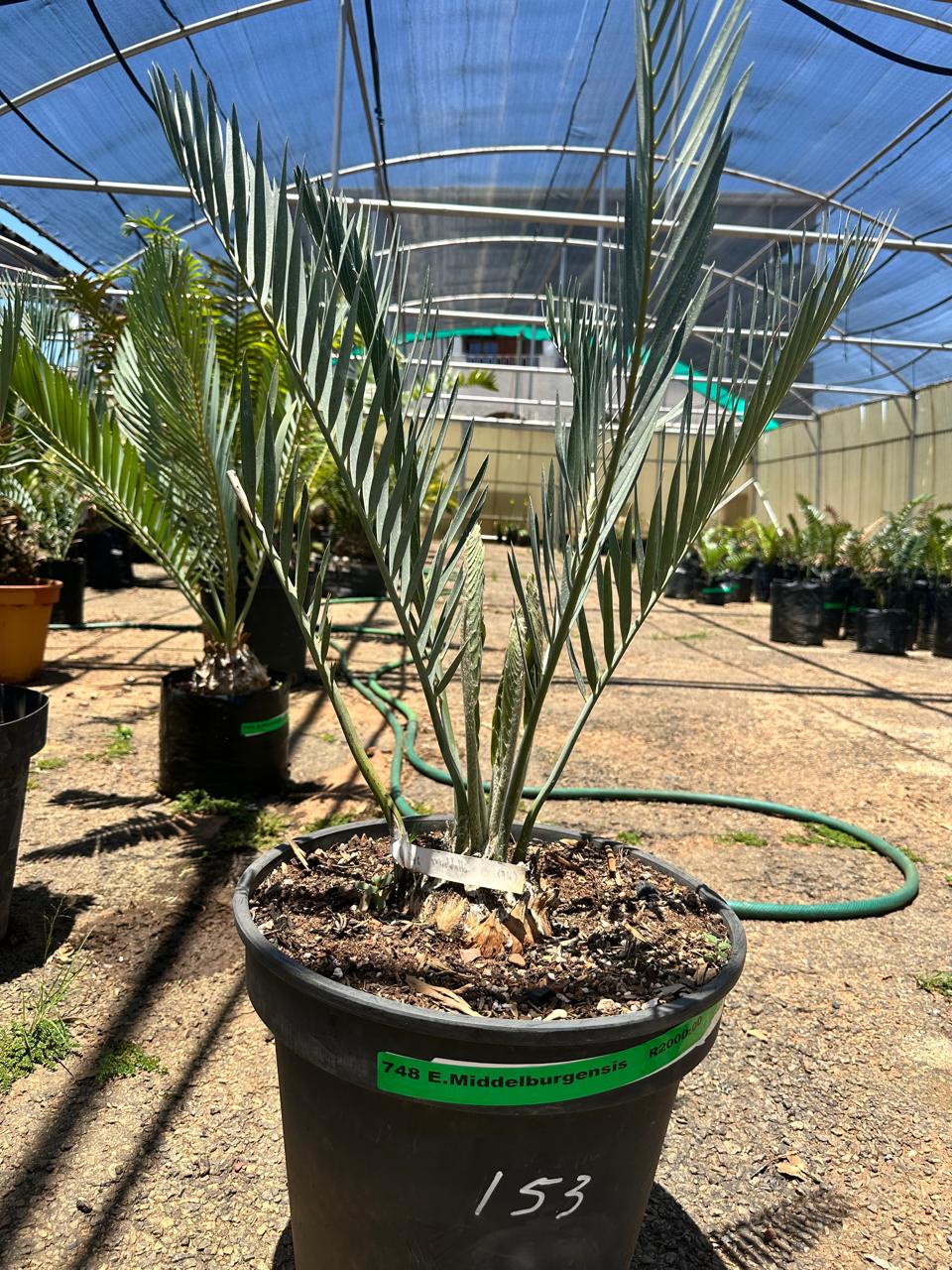

Encephalartos middleburgensis
Encephalartos middleburgensis, native to South Africa, is a critically endangered cycad species found in the Middleburg region. Known for its tall, columnar stem and dark green, glossy leaves, it grows in rocky areas. Conservation efforts are critical, as wild populations face threats from illegal harvesting and habitat degradation.
Cones
The cones of Encephalartos middleburgensis are impressive and distinct. Male cones are elongated, cylindrical, and can grow up to 50 cm long, with a greenish-yellow color and a textured surface. Female cones are larger and more rounded, showcasing a pale green color when mature. These cones develop on separate male and female plants, as the species is dioecious. The female cones produce bright red seeds that are vital for the propagation of this species, though natural reproduction in the wild is rare.
Leaves
The leaves of Encephalartos middleburgensis are dark green, glossy, and stiff, forming a graceful arch. Each leaf can reach up to 1.5 meters in length, with the leaflets arranged in a dense, spiraled formation along the central rachis. The leaflets are sharply pointed and slightly serrated, providing protection from herbivores. The thick cuticle on the leaves helps reduce water loss in the plant’s arid, rocky environment, making them well-suited for surviving in harsh climates and rocky outcrops.
Stems
Encephalartos middleburgensis stems are tall and columnar, often reaching up to 4 meters in height. These stems are typically covered with persistent leaf bases, creating a rugged, armored appearance. The stem has the ability to store water, which helps the plant survive dry periods in its natural rocky habitats. Over time, the stems can develop into multiple trunks or offsets, giving the cycad a more robust structure, especially in older plants. These stems provide stability and serve as energy reserves.